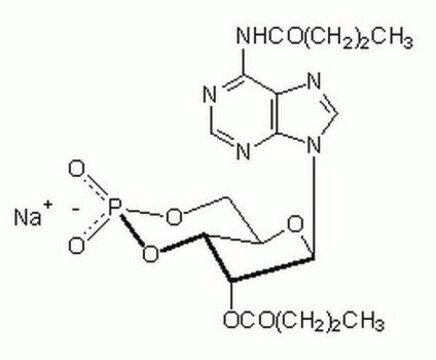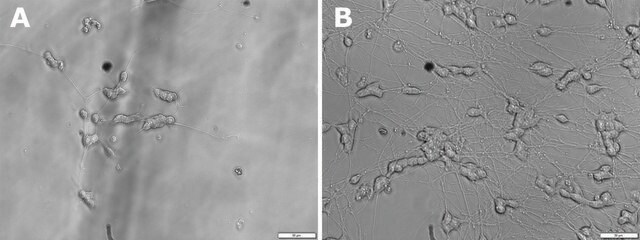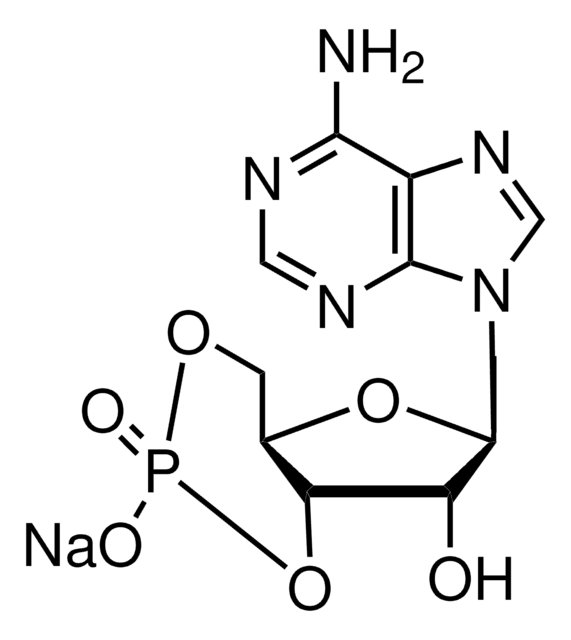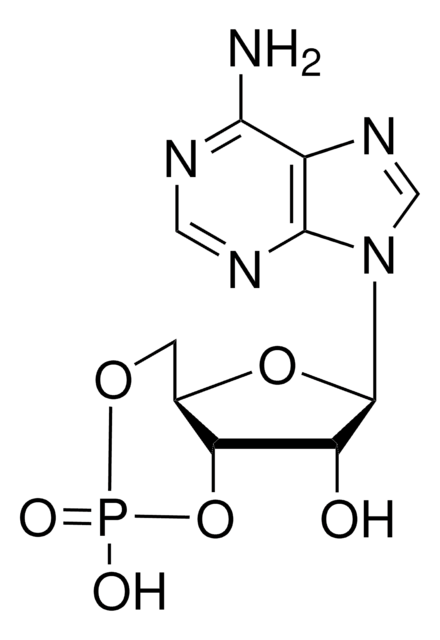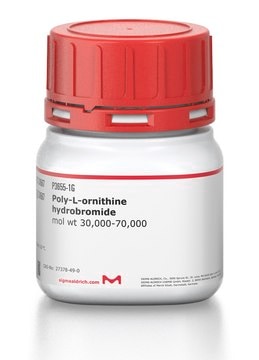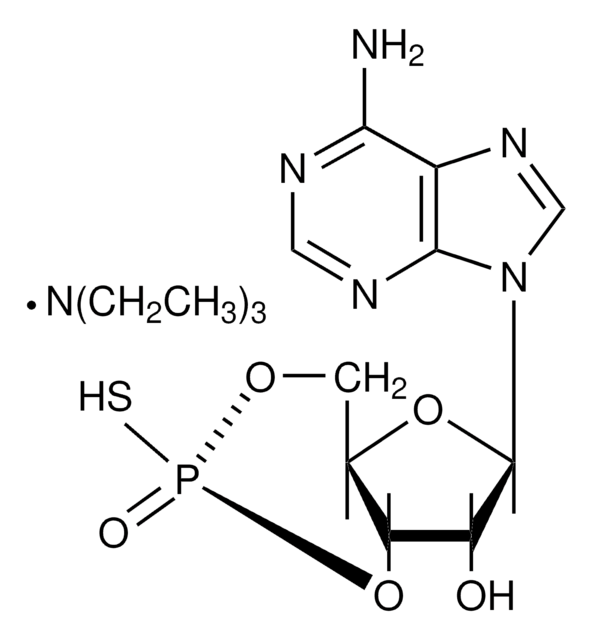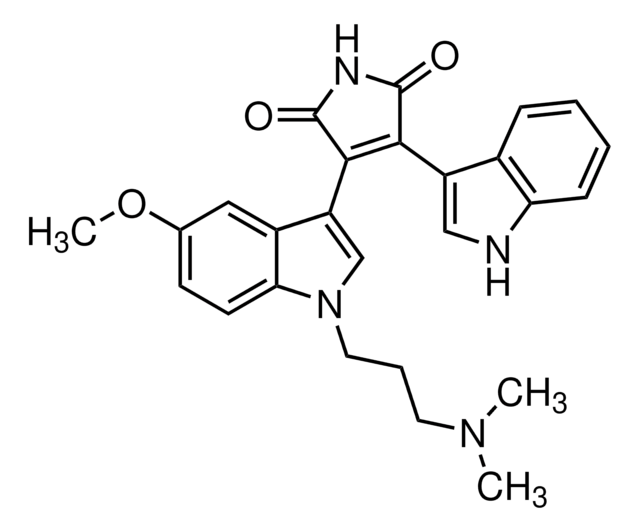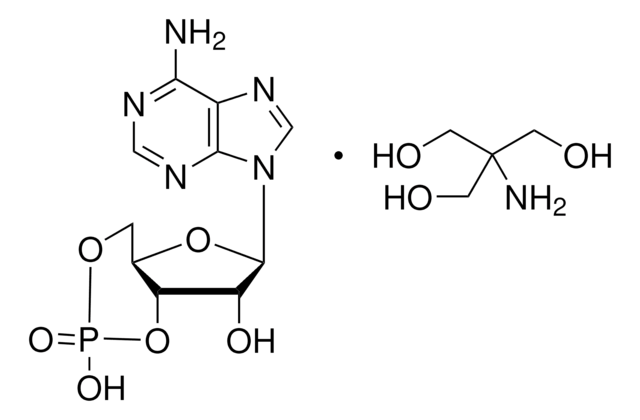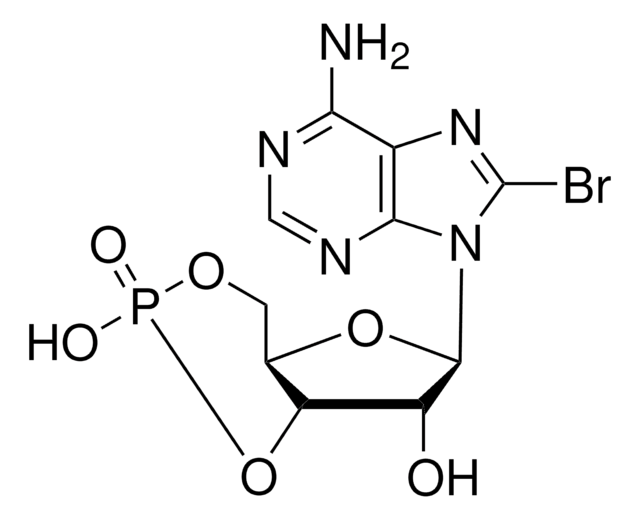D0260
N6,2′-O-Dibutyryladenosine 3′,5′-cyclic monophosphate sodium salt
≥97% (HPLC), powder
Synonym(s):
Bucladesine sodium salt, Dibutyryl cAMP sodium salt, Dibutyryl cyclic-AMP sodium salt
About This Item
Recommended Products
Assay
≥97% (HPLC)
form
powder
impurities
≤0.5% cyclic AMP and 2′-O-monobutyryl-cyclic AMP
≤3% N6-monobutyryl-cyclic AMP
color
white
solubility
H2O: 100 mg/mL
storage temp.
−20°C
SMILES string
[Na+].CCCC(=O)Nc1ncnc2n(cnc12)[C@@H]3O[C@@H]4COP([O-])(=O)O[C@H]4[C@H]3OC(=O)CCC
InChI
1S/C18H24N5O8P.Na/c1-3-5-11(24)22-16-13-17(20-8-19-16)23(9-21-13)18-15(30-12(25)6-4-2)14-10(29-18)7-28-32(26,27)31-14;/h8-10,14-15,18H,3-7H2,1-2H3,(H,26,27)(H,19,20,22,24);/q;+1/p-1/t10-,14-,15-,18-;/m1./s1
InChI key
KRBZRVBLIUDQNG-JBVYASIDSA-M
Looking for similar products? Visit Product Comparison Guide
General description
Application
- as a medium supplement for neural crest stem cells (NCSCs) differentiation
- as a component of thawing medium for cryopreserved human iPSC (induced pluripotent stem cell)-derived neurons
- in serum-free Dulbecco′s modified eagle′s medium (DMEM) to induce astrocyte differentiation
Biochem/physiol Actions
Features and Benefits
Caution
Storage Class Code
11 - Combustible Solids
WGK
WGK 2
Flash Point(F)
Not applicable
Flash Point(C)
Not applicable
Personal Protective Equipment
Choose from one of the most recent versions:
Already Own This Product?
Find documentation for the products that you have recently purchased in the Document Library.
Customers Also Viewed
Our team of scientists has experience in all areas of research including Life Science, Material Science, Chemical Synthesis, Chromatography, Analytical and many others.
Contact Technical Service
